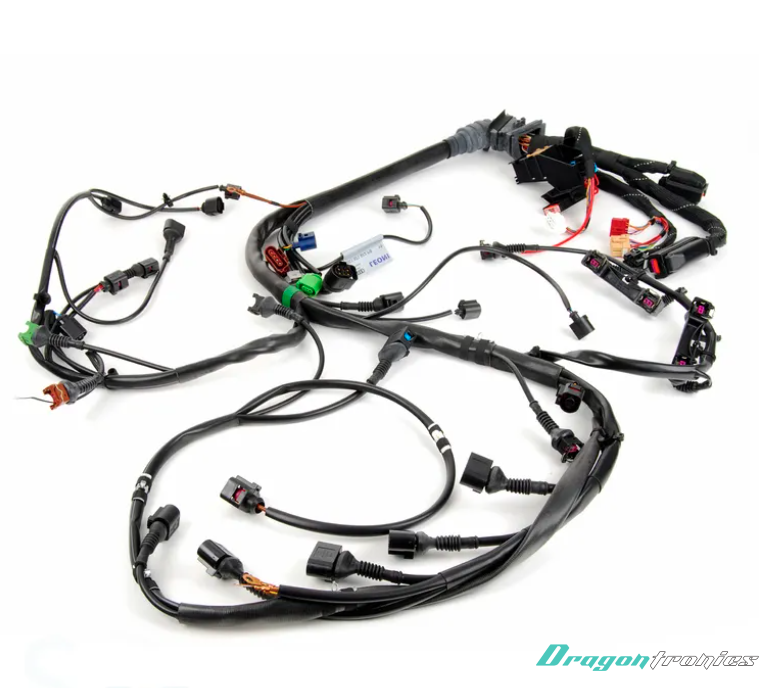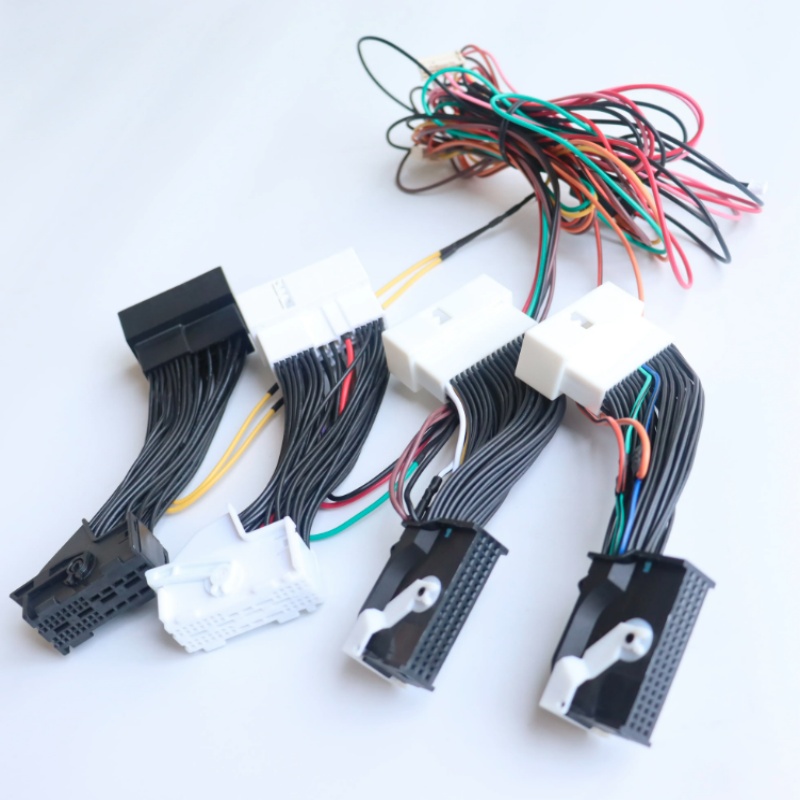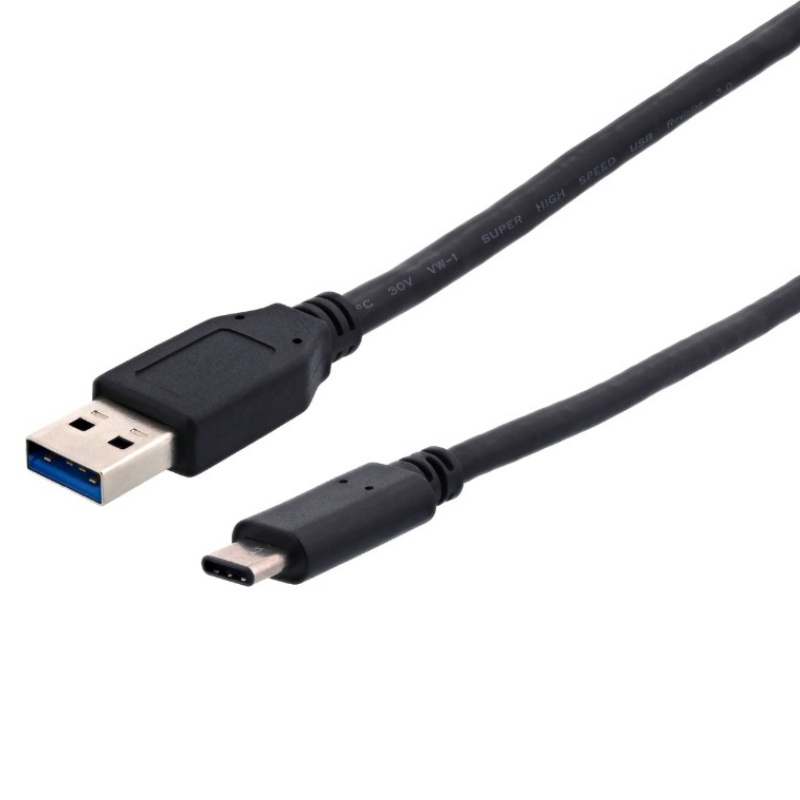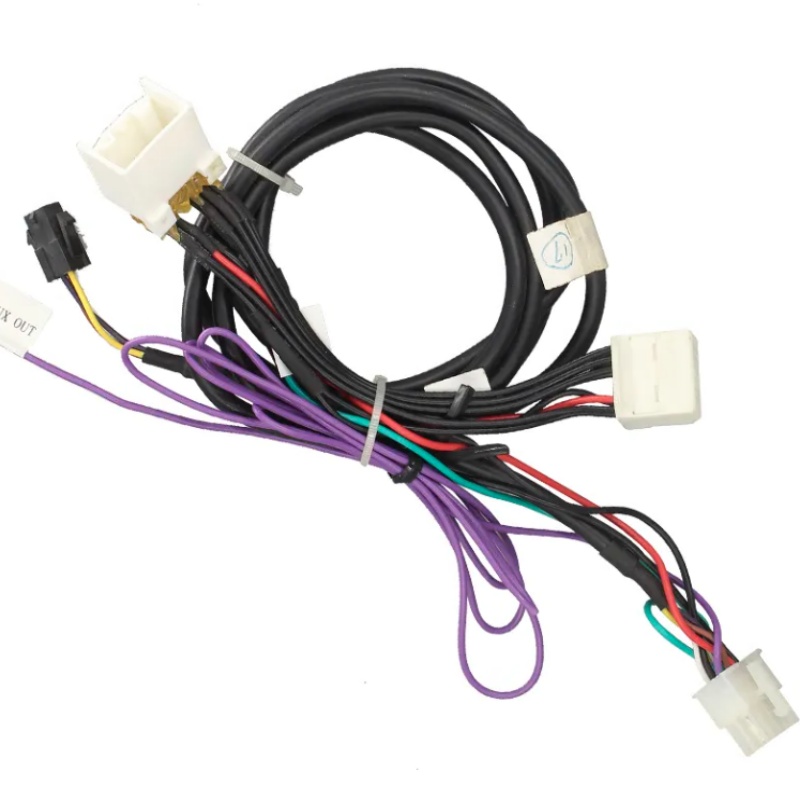PRODUCTS
Automotive Wiring Harness rearview mirror wiring harness for car professional OEM manufacturing experience Designated Connectors
- Product description: Automotive Wiring Harness rearview mirror wiring harness for car professional OEM manufacturing experience Designated Connectors
An Automotive Rearview Mirror Wiring Harness is a specialized electrical assembly designed to connect the rearview mirror in a vehicle to its electrical system, enabling the proper functioning of various features integrated into the mirror. These features often include lights, sensors, cameras, auto-dimming functionality, and other advanced systems that improve driving safety and comfort.
Key Functions of an Automotive Rearview Mirror Wiring Harness:
1. Power Supply:
o The wiring harness supplies electrical power to the rearview mirror and its integrated features, such as auto-dimming, lights, or cameras, by connecting it to the vehicle’s electrical system.
2. Signal Transmission:
o It carries signals between the rearview mirror and other components in the vehicle, such as the onboard computer, cameras, and sensors. This allows the mirror to interact with other systems like parking assist, lane-keeping assistance, or collision detection.
3. Auto-Dimming Control:
o Many modern rearview mirrors feature auto-dimming technology to reduce glare from headlights behind the vehicle. The wiring harness connects the mirror's sensors to the vehicle’s system to detect light levels and adjust the mirror's tint accordingly.
4. Integration with Sensors and Cameras:
o In advanced vehicles, rearview mirrors may be equipped with cameras for parking assistance, rear-view video, or collision warning. The wiring harness ensures the mirror is connected to these sensors and cameras, enabling video feeds to be displayed on a screen in the vehicle.
5. Integration with Onboard Computer:
o The harness may also link the rearview mirror to the vehicle's onboard computer system, enabling features like temperature sensors, compass, or automatic light sensors to be displayed on the mirror.
Applications for Automotive Rearview Mirror Wiring Harness:
1. Auto-Dimming Rearview Mirrors:
o The wiring harness allows the rearview mirror to adjust its tint automatically in response to the brightness of headlights from vehicles behind. This prevents glare, improving night driving safety.
2. Rear-View Cameras and Parking Assistance:
o Rearview mirrors with built-in cameras or video displays use the wiring harness to connect to the vehicle’s backup camera system or parking sensors, displaying video feeds for parking assistance.
3. Temperature Sensors:
o Some mirrors are equipped with temperature sensors that display the outside temperature on the mirror. The harness connects the mirror to the vehicle's system to provide this information.
4. Compass Displays:
o Advanced mirrors may also include a digital compass that provides directional information. The wiring harness connects the compass to the vehicle’s onboard system.
5. Bluetooth and Hands-Free Calling:
o Some rearview mirrors are equipped with Bluetooth capabilities for hands-free calling. The wiring harness connects the mirror to the vehicle’s audio system, allowing voice commands and communication through the mirror.
6. Safety and Driver Assistance Features:
o Rearview mirrors with integrated safety features, such as blind-spot monitoring, lane-keeping assist, and collision warning, use the wiring harness to connect to the vehicle’s sensors and radar systems.
7. HomeLink Systems:
o Some vehicles feature HomeLink systems built into the rearview mirror, which allows the driver to open garage doors or gates. The wiring harness connects the mirror to the HomeLink system, enabling these functions.
Advantages of an Automotive Rearview Mirror Wiring Harness:
1. Streamlined Installation:
o A wiring harness simplifies the installation process by grouping all the necessary wires and connectors into one organized bundle. This reduces the complexity of wiring individual components and speeds up the installation.
2. Reduced Risk of Electrical Issues:
o A properly designed wiring harness reduces the risk of loose or disconnected wires, which can lead to electrical failures or malfunctions in the mirror’s systems.
3. Enhanced Safety and Functionality:
o The wiring harness ensures that the various advanced safety features are integrated into modern rearview mirrors—such as auto-dimming, cameras, sensors, and Bluetooth—operate correctly, improving driver safety and convenience.
4. Durability:
o The wiring harness is designed to withstand the harsh conditions inside a vehicle, including heat, vibrations, and moisture. This ensures long-term durability and reliable operation of the rearview mirror and its integrated systems.
5. Customization:
o The wiring harness can be customized for specific vehicle models and mirror features. This ensures that the connections are optimized for the needs of the vehicle’s electrical and safety systems.
Conclusion:
The Automotive Rearview Mirror Wiring Harness is an essential component that connects the rearview mirror to a vehicle’s electrical system, enabling the functionality of various advanced features such as auto-dimming, cameras, sensors, Bluetooth, and safety systems. By ensuring proper power supply, signal transmission, and integration with other vehicle systems, the wiring harness plays a crucial role in enhancing driving safety, convenience, and overall vehicle functionality. It simplifies installation, reduces the risk of electrical issues, and ensures that the mirror’s features operate reliably in various conditions.
Categories
Latest News
Contact Us
Contact: Fiona Wu
Phone: 86 - 173 28414 818
Tel:
Add: 20, Changtian Road, Hengli, Dongguan, Guangdong, 523852, China




 Lankecms
Lankecms lankecms
lankecms
 Lankecms
Lankecms